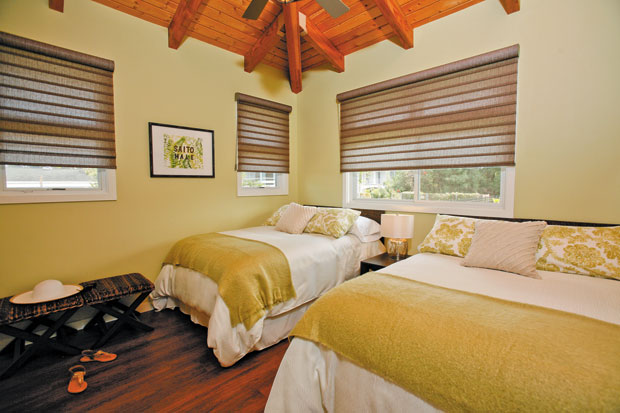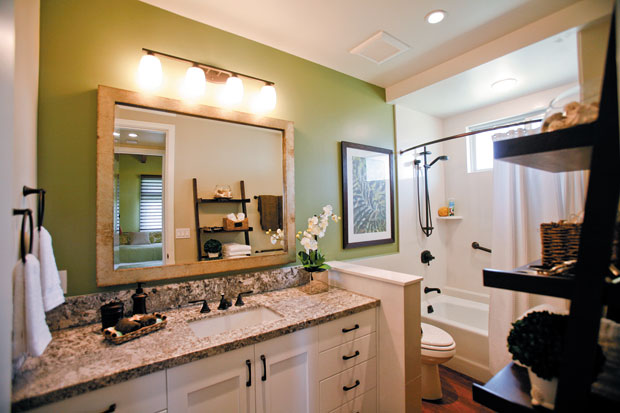Beyond tactile sensation, texture is an important visual element used to create interest and harmony. Here are tips on how to make its presence felt
Just last week, I gave a talk to the Professional Women’s Network about how your space can enhance your business. One of the things I talked about is the importance of texture, and how understanding and utilizing it in your design can truly enhance your environment.
Interestingly, most people don’t think about texture. They’re focusing more on color. So here I’ll use the Waialua beach house that I redesigned to show you how texture can not only add personality to a space, but also help your rooms transition seamlessly from one to the next.

Exactly what is texture? It’s not simply rough or smooth. It’s anything that your eyes or your hands can rest on. It could be a pattern on a pillow, exposed beams in the ceilings, a sisal rug or shiny glass surfaces. Think of a room where you might only see glass. Even if you see different colors, there’s still not much to focus on to break the monotony.
Using different textures in a space will give it contrast and interest. Repeating them will pull a space together. Here in the beach house, the bathroom is very near the master bedroom, so I’ve layered and repeated the same textures in both places to tie them together.
This is not the main residence for the owners, but a family retreat to share with their children and grandchildren. In other words, we needed lots of breathing space and decor that would be peaceful and relaxing for the grandparents and at the same time fresh and modern for the kids.
I started with a light green on all four walls of the bedroom and an accent wall in the bathroom, highlighted by white window trim to keep things light and airy. The bathroom picks up the white wood trim in the cabinetry.
The wood is already an introduced texture. I brought in more with dark walnut frames and nightstands adding an earthiness to the bedroom that is repeated in the leaning shelf and drawer pulls, faucet and shower-head in the bathroom. To give it an island feel, I placed baskets on the nightstand and on the leaning shelf. The basket weave in the bedroom stool also picks up this texture.
Finally, I brought in a fresh, contrasting texture with the mercury glass table lamp, and repeated it in some of the bathroom accessories.
So don’t focus just on color. Tying in textures as well from one room to the next will give your spaces a sense of harmony.

How can you do this in your own setting? When you have a master suite, or even as in this house, where the bathroom is very nearby, decide on your palettes of color and texture. It doesn’t mean that you need the same cabinetry. But look for elements that can tie in. White cabinets in the bathroom? White trim in the bedroom. Dark drawer pulls? Dark frames. Get the picture? It’s not that hard once you start understanding.
I hate to keep repeating myself because if you’ve been reading for a while, you know I’ve talked about this before, but I’ll say it again: Layer and repeat. (Whoops! I think I just repeated myself!)
Cathy Lee is president and designer of Cathy Lee Style and Cathy’s Marketplace, a furniture and accessories showroom with design services at 1110 University Ave. She recently opened reStyle Hawaii, an affordable, style-conscious consignment warehouse with upholstering and repurposing services at 420 Keawe St. To find out more, go to www.cathyleestyle.com.